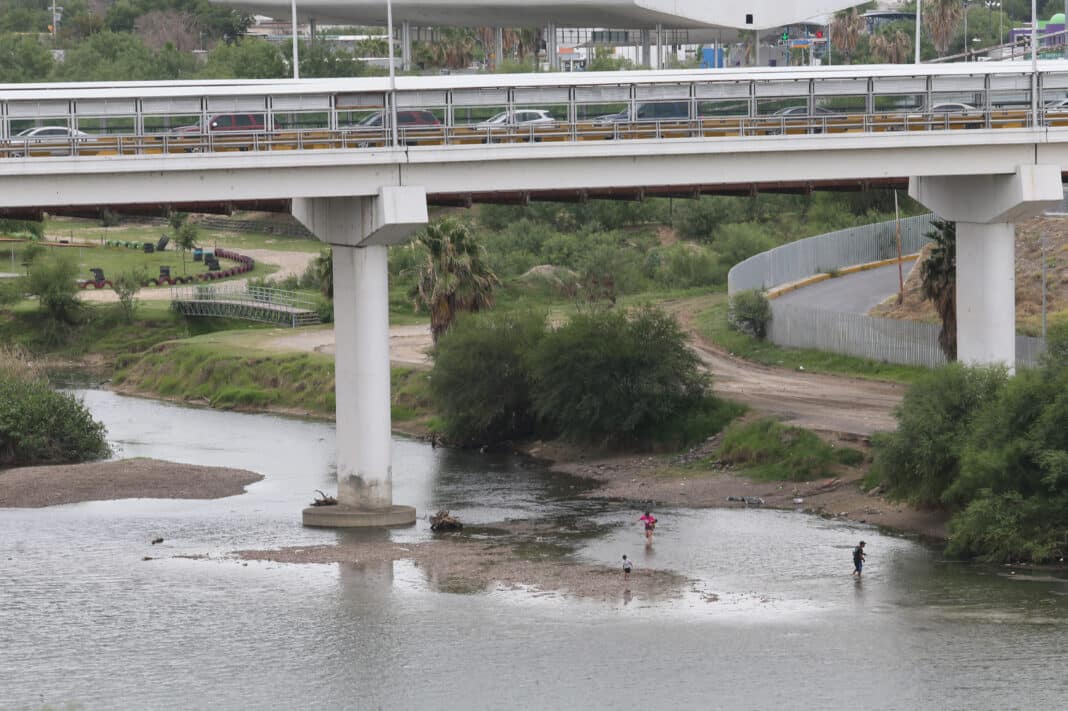Though weeks of rainfall throughout the Rio Grande Valley may have busted a regional drought, the rains have done little to fill the reservoirs that supply South Texas with water for municipal and agricultural use.
Forecasters say the dips in our stored water have a lot to do with a persistent weather phenomenon known as La Niña, which has kept things dry in the southwestern United States and northern Mexico over the last year.
“According to the U.S. drought monitor, extreme drought — which is D3 level — is now only being observed in portions of northwestern Zapata County. … Drought conditions have improved, (are) no longer being observed across northern Brooks, Kenedy, most of Willacy, southern Hidalgo counties, as well as all of Cameron County,” said Tim Speece, a meteorologist with the National Weather Service in Brownsville via phone Thursday.
“The bottom line there is that the drought conditions have improved, especially for some of the central and eastern portions of deep South Texas. … The western counties still have some ground to make up,” Speece said.
The Valley has seen significant rainfall since May — so much so that daily rainfall records have been broken several times, specifically in Hidalgo County, according to a “drought information statement” published by the NWS.
Speece said the NWS issues such statements weekly.
The most recent, published Saturday, shows that Brownsville has received 9.58 inches of rain to date this year — more than two inches above normal. Meanwhile, 11.35 inches of rain has fallen over Harlingen in 2021 thus far, which is some four inches above normal.
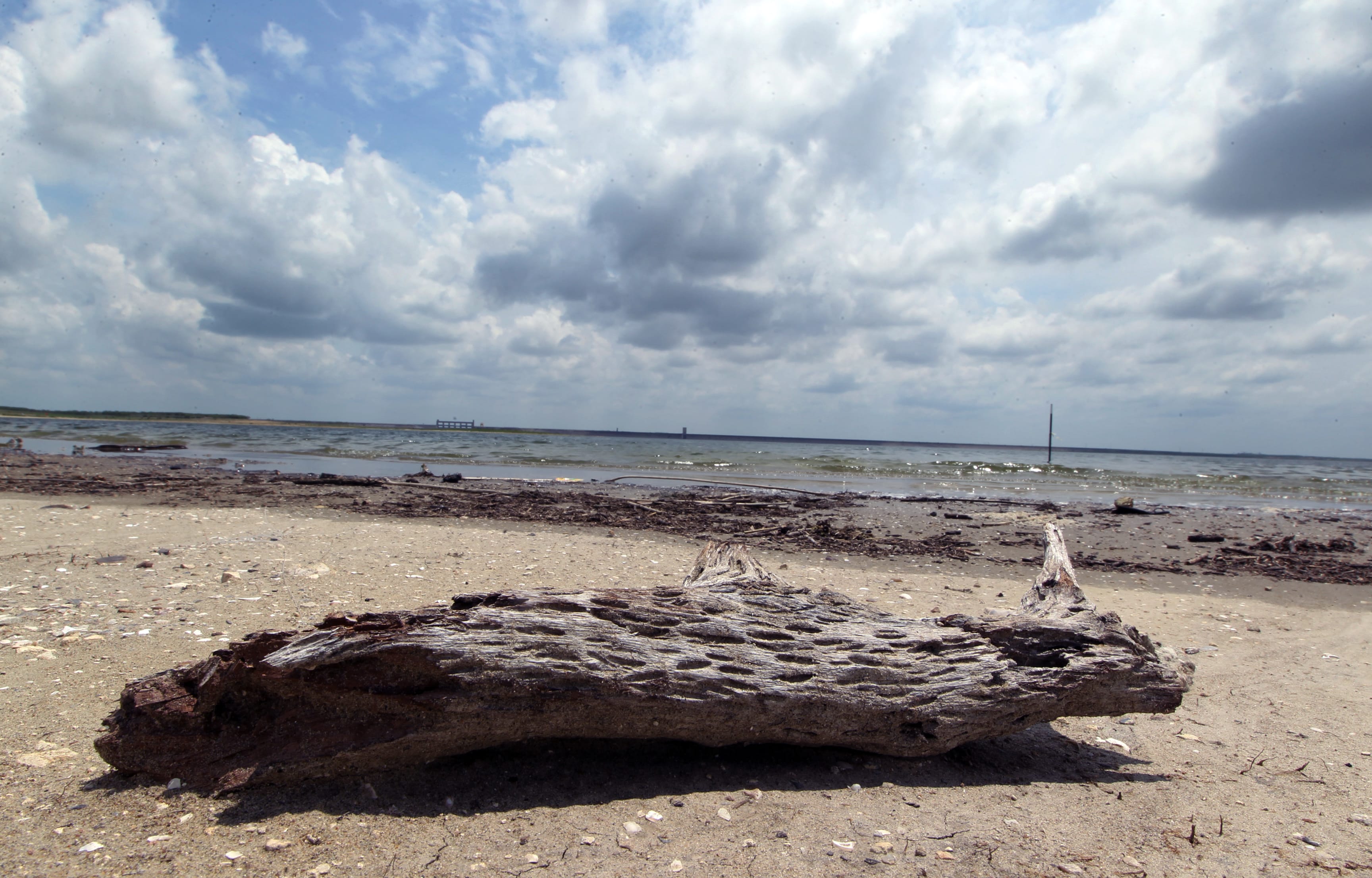
But it’s McAllen that has seen the wettest conditions so far. Some 16.61 inches of rain have fallen over Hidalgo County’s largest city, nearly 10 inches above normal.
Nearly half of that rainfall has fallen just this month — 7.14 inches over the first five days of June. That figure is 6.8 inches above normal for the city, according to the NWS’s drought information statement.
But while the rains have done much to green up lawns and coax colorful summer blooms in yards throughout the Valley, the two reservoirs which supply the region with water remain below capacity.
Both Falcon and Amistad reservoirs are still well below conservation capacity, with gauges at Falcon, in particular, showing the lake below 20% full.
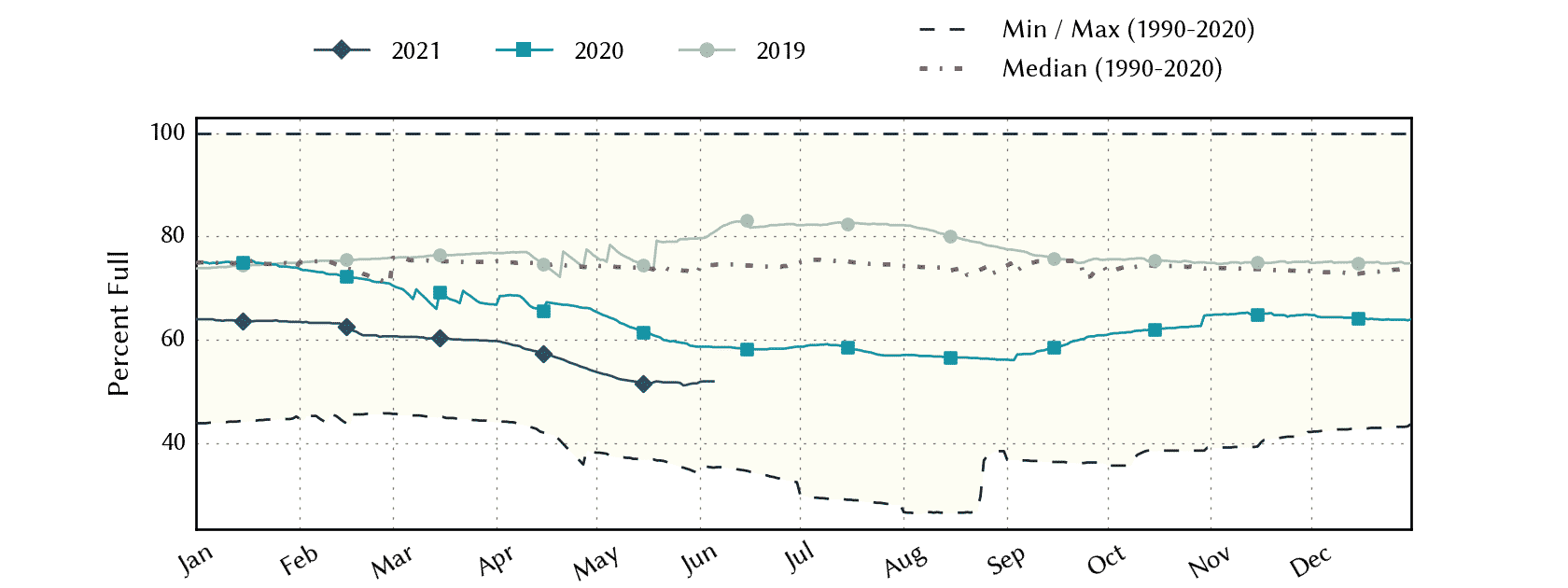
“Amistad (Reservoir) is at 32.8% of conservation capacity,” said Lori Kuczmanski, a spokesperson with the International Boundary and Water Commission, on Friday.
“Falcon (Reservoir) is at 17.71% of conservation capacity,” she said.
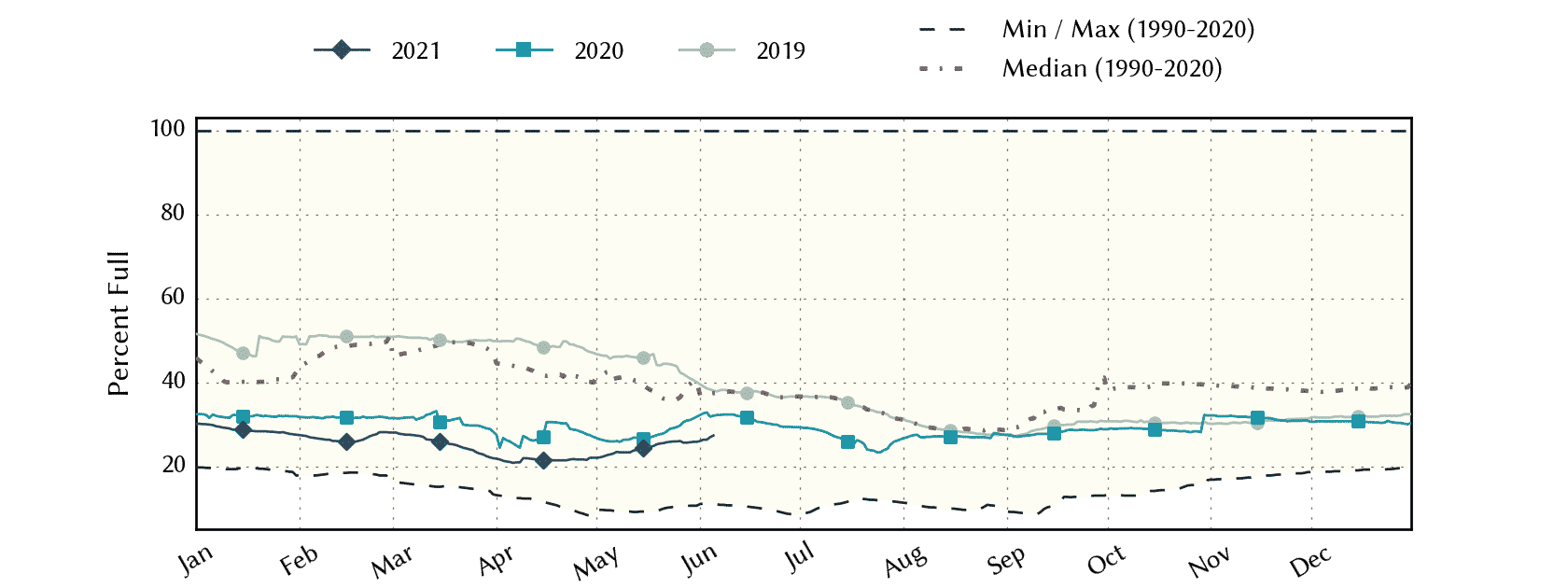
Kuczmanski explained that officials at the IBWC keep three figures in mind when considering how “full” a reservoir is: conservation capacity, super storage and flood capacity. She likened the three different numbers to the amount of coffee in a coffee cup.
“So, from the bottom coffee cup to halfway is conservation elevation. Then you have from there, like another inch up your coffee cup, that is like super storage. It’s like extra storage. And then another inch up — all the way to the rim of your coffee cup — is flood capacity,” Kuczmanski said.
Both of the reservoirs that supply the Valley — Falcon Reservoir in Zapata County, and Amistad Reservoir in Val Verde County — are well below conservation capacity, meaning the two human-made lakes have plenty of room to store more water.
“The significant rainfall is falling on the basins east of the Rio Grande, so it’s not really affecting our reservoirs,” Kuczmanski said.
And therein lies a potential problem.
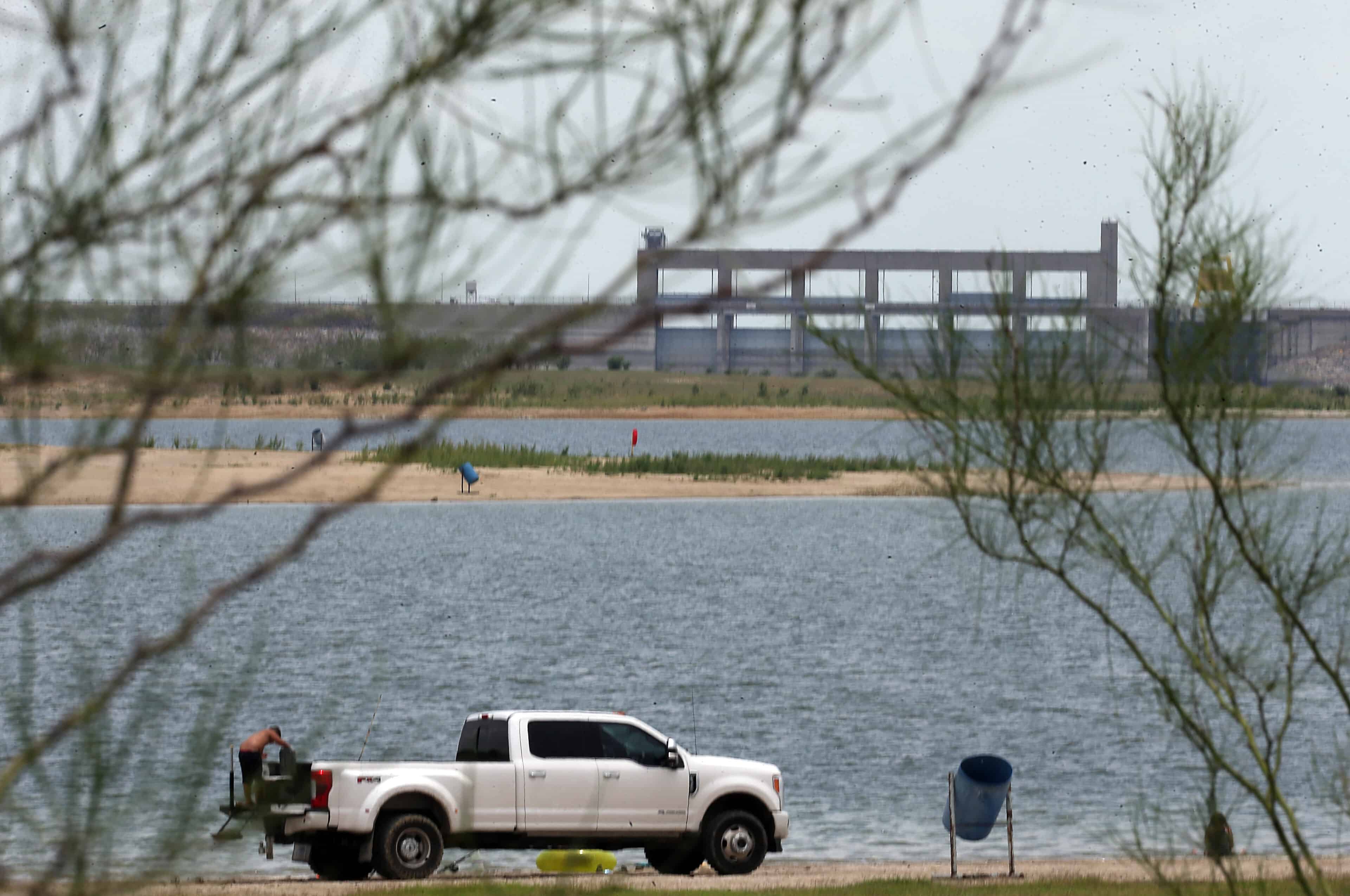
The Rio Grande’s watershed is fed by a complex network of waterways that stretch across the southwestern United States and through the mountains of northern Mexico. But it’s precisely those regions where rain has been scarce for more than a year.
“For the reservoirs the rainfall that we’ve been getting here is not the most beneficial because it all falls downstream of the Falcon Reservoir and the Anzalduas Reservoirs,” Speece said.
Drought conditions in the desert Southwest started last summer, but began to truly accelerate in the fall due in large part to La Niña pattern which has shifted the jet stream northward into Canada, the meteorologist said.
“We’ve had an ongoing, pretty persistent La Niña pattern in the Pacific that has been ongoing for at least the last good six months to a year,” Speece said.
“What ends up happening is that (the) jet stream pattern is shifted more towards Canada and the northern U.S. and what that ends up producing is the Pacific Northwest is wetter, but the desert southwestern states and into Texas — basically, … the southern third of the country goes into a drier pattern,” he said.
According to data published by the Texas Water Development Board, Falcon Reservoir’s water levels for the year are lower than last year, and significantly lower compared to 2019.
The levels are also low compared to median water levels over the last 30 years.
Though the Valley has seen drought-busting rain this year, the rest of the American Southwest is struggling with dry conditions. In northern California, the water levels at Lake Oroville are at risk of falling below the level needed to operate hydroelectric power plants, according to reports by the Associated Press.
Though far away, what happens in the western states can affect conditions here.
“Those are the areas — if we really want to get more surplus water into the reservoirs — that’s where a lot of it needs to fall as rain there,” Speece said.
“Unfortunately, the current drought monitor’s indicating Arizona, New Mexico, Utah, West Texas, Nevada, a good chunk of California, western Colorado — those areas are still being impacted very hard by the ongoing drought,” he said.

